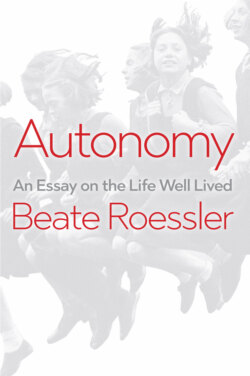Читать книгу Autonomy - Beate Roessler - Страница 17
2 Ambivalences
ОглавлениеVorrei e non vorrei; mi trema un poco il cor.
(Zerlina, Don Giovanni)
“Neurotic, ha!” I let out a scornful laugh. “If neurotic is wanting two mutually exclusive things at one and the same time, then I’m neurotic as hell. I’ll be flying back and forth between one mutually exclusive thing and another for the rest of my days.”1
Autonomy can fail in a number of ways, and ambivalence is one of them. We have just seen that an action is autonomous when the person acting has reflected on her (often conflicting) desires, motivations, beliefs, and feelings and has made a decision according to her own reasons. If ambivalence means being too uncertain to be able to make a decision, or repeatedly questioning a decision already made, then certainly it represents a danger. This is why ambivalence and indecisiveness are frequently conceived of as threats to autonomy in contemporary theories of autonomy and action.
“Purists” (as Amélie Rorty calls them) argue that ambivalence makes individual autonomy downright impossible, as uncertainty and indecisiveness are an expression of an equivocal will. Only the unequivocal will that unambiguously motivates an action, they claim, is an autonomous will that is no longer influenced by conflicting, heteronomous desires. But, on the other hand, ambivalent feelings and motivations, enduring ambivalences with lasting effects, are so clearly a part of our everyday lives and conduct, and not just when making difficult decisions, that at first glance it is not really convincing to describe ambivalence as a “disease of the will.”2 As long as ambivalences do not obstruct our every action, they are for most of us part of our daily thoughts and decisions.
We also have to deal with different forms of ambivalence in our everyday lives where we are confronted with a variety of conflicts of identity that can be directly tied to ambivalent decision-making.3 Cultural identity conflicts play a role here, as do conflicting role requirements, which can make it extremely difficult if not impossible for a person to make clear-cut decisions. Marya Schechtman offers the example of an attorney who has to attend an important partner meeting but also wants to go to her daughter’s ballet recital.4
Does all this mean that most of us mostly do not act autonomously? That seems highly implausible and problematic. The relation between autonomy and ambivalence must therefore be analyzed more precisely – particularly if we are interested in a concept of autonomy that can be used to explain and interpret autonomy in daily life and that can be understood as a prerequisite of a meaningful, well-lived life. In what follows, I will first expound the concept of ambivalence and its origins, then distinguish between different forms of ambivalence that pose different kinds of threats. I will then discuss more or less plausible theories for explaining ambivalence and dedicate myself to the question of how complex the concept of an ambivalent self needs to be.
What is the claim that I want to defend? That appropriately coping with ambivalence need not be conceived of as a threat to autonomy, that ambivalence should rather be understood as an expression of the complexity of the self, of a rational relationship to conflicts of desires, beliefs, roles, and identities, and finally of the contingencies of everyday life. A person is thus autonomous precisely when she can deal with her ambivalences in a self-determined way.
